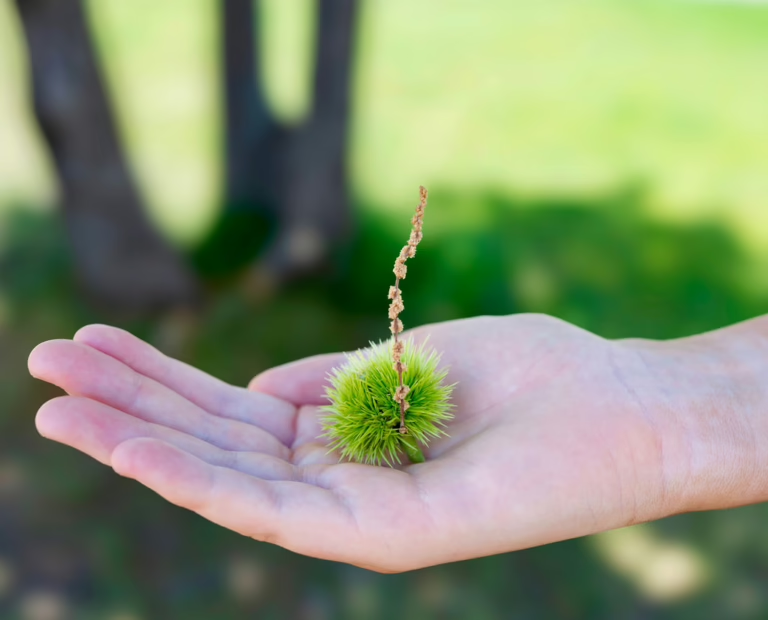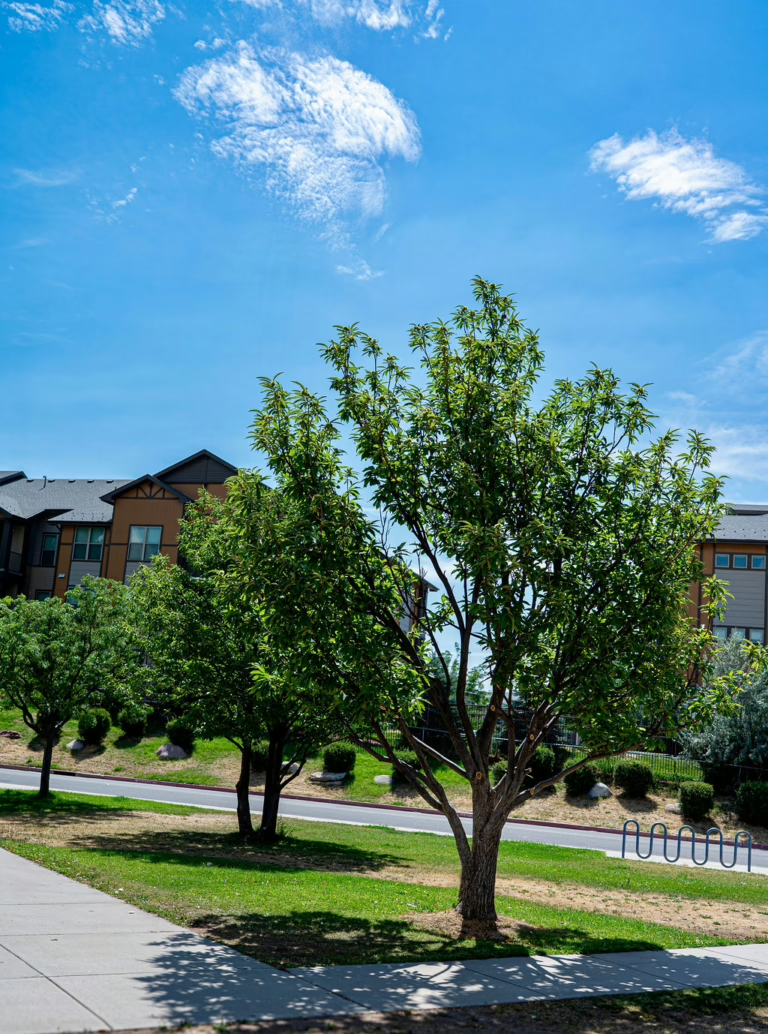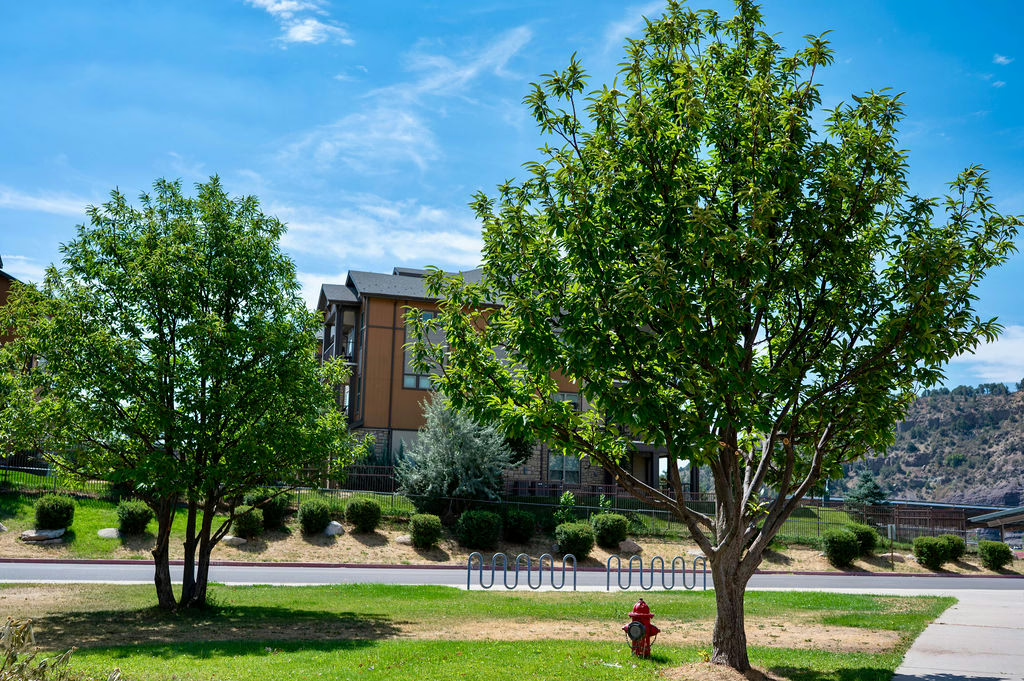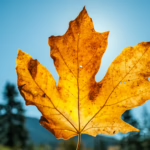Rare Chestnut Trees at Escalante Middle School: A Little-Known Part of Durango’s Urban Forest
In Durango, Colorado, trees like pines, oaks, and chokecherry are common sights throughout the urban forest. But hidden in the corner of Escalante Middle School’s grounds is a less common neighbor— a small grove of chestnut trees. How did these trees, unusual for this area, come to be here? And why might they matter more than we realize?
History of the American Chestnut Tree
To uncover the mystery of the Escalante chestnuts, we must travel back— 10,000 years after the Ice Age, through centuries that led to the early 1900s…
Indigenous Stewardship of the American Chestnut
For thousands of years, Indigenous peoples of the Appalachians lived alongside the American chestnut. The Cherokee, Iroquois, and Mohegan (Mohican) tribes, in particular, relied on the chestnut’s abundant nuts and wood, as well as the wildlife it attracted— from birds and squirrels to bears, turkeys, and deer— for food, medicine, and crafts.
These communities managed the landscape to promote chestnut growth, using controlled burning and forest clearing to encourage its spread. Across many tribes, the word for chestnut shared similar forms— such as chinkapin, chinquapin, chincapin, chincopin, and chechinquamin.
European Settlement and Use of the American Chestnut
As European settlers carved the land with fire and steel, uprooting native lives, they discovered the American chestnut’s sturdy wood— resilient and forgiving— in contrast to their own destructive nature. Valued for its rot resistance, straight grain, and strength, chestnut wood was widely used in log cabin foundations, fence posts, flooring, and caskets. Later, railroad ties and telephone and telegraph poles were crafted from chestnut, many of which remain in use today.
These trees offered more than timber. Chestnut nuts, dense with calories, vitamin C, and antioxidants, were roasted over open fires or ground into nourishing flour. Forests of chestnut fattened roaming livestock in silvopastures, while the tree’s tannins tanned leather and its wood crafted furniture and musical instruments.
The American chestnut was a foundation— for ecosystems, cultures, and economies. Every holiday harvest, trains laden with chestnuts rolled into city markets, the last echo of a life-giving forest before a devastating blight changed its fate.
The Chestnut Blight
In about 50 years during the late 1800s and early 1900s, the fungal pathogen Cryphonectria parasitica arrived on imported Japanese chestnut trees and swept through the American chestnut forests. It reduced the once invaluable giant to mostly early-successional-stage shrubs by the time of the Great Depression.
Since then, no new American chestnut lumber has been sold in the U.S. for decades. Today, the bulk of the annual American chestnut nut crop, totaling around 20 million pounds, comes from introduced Chinese and European chestnut species and imports from Italy and Turkey.
Concurrently, a fungus-like organism called Phytophthora cinnamomi, likely introduced to North America about a century before the blight, was killing American chestnuts primarily in the southern part of their range. This disease, called ink rot or Phytophthora root rot, kills the entire tree by attacking its roots.
Despite its dramatic decline as a lumber and nut species, the American chestnut is not extinct. The blight cannot kill its underground root system because the pathogen cannot compete effectively with soil microorganisms. Stump sprouts vigorously regrow in cutover or disturbed areas with ample sunlight but inevitably succumb to the blight again. This cycle of death and rebirth has kept the species alive, though it is considered functionally extinct.
How Chestnut Trees Found Their Way to Escalante

How did chestnut trees come to grow in Durango, far beyond their historic range? Matt Besecker, Durango’s City Arborist first spotted these unexpected trees during a city tree survey at Escalante Middle School. Surprised by their presence, he identified them as likely Chinese and European chestnuts.
Importantly, Chinese chestnuts show high resistance to chestnut blight and European chestnuts have moderate resistance. This resistance has made them key players in restoration projects across the country. Organizations like The American Chestnut Foundation have planted Chinese and European chestnuts, as well as bred blight-resistant hybrids by crossing American chestnuts with these hardy relatives. They have planted these trees widely to preserve genetic diversity, advance research, and educate the public. Supporting their mission helps keep this hope alive.
While the exact origins of the Escalante chestnuts are unknown, their planting is possibly connected to the broader chestnut restoration efforts aimed at reestablishing this iconic species.
Differences Between Chinese, European, and American Chestnuts

Chinese, European, and American chestnuts differ in shape, texture, and taste. American chestnut leaves are long and narrow, edged with large, sharp teeth that curve inward with a thin, papery texture. Chinese chestnut leaves, by contrast, are oval and thick, with a waxy feel and smaller teeth, their bases rounded and solid. European chestnut leaves taper gently with teeth that can be broad and rounded.
Regarding the nuts, American chestnuts are smaller (about ½ to 1 inch), pointed at the tip, and hairy over much of their length; their burs are covered with dense long, slender spines. Chinese chestnuts are larger (¾ to 2 inches), rounded at the tip, with hairs only on the nut tips, and their burs feature sparse short, thick spines. European chestnuts have larger nuts and burs somewhat similar to Chinese but can vary.
Taste-wise, American and Chinese chestnuts are sweet, with Chinese nuts often sweeter, while European chestnuts tend toward a starchier flavor.
What It Takes to Grow Chestnuts Here— and Why It Matters
Chestnuts can thrive in Durango with careful site choice, soil preparation, and regular care, helping to boost biodiversity and expand the range of species in the urban forest. These trees need well-drained soil and enough space for their wide canopy and deep roots.
Durango’s dry air, shifting temperatures, and cold winters test chestnuts, which naturally favor moderate humidity and consistently moist— but never soggy— soil.
Like many species growing outside their traditional range, chestnuts in Durango face threats from insects and require ongoing maintenance. Managing their sharp burs keeps paths safe, while controlling competing vegetation supports healthier growth. Chestnuts also attract local wildlife, so thoughtful placement is crucial to prevent encounters with bears and deer.
Part of a Living Story
In the wake of the blight that nearly wiped out the American chestnut, the trees at Escalante Middle School are living reminders of nature’s unique ability to adapt and recover— even in the most unexpected places.
Your observations can make a difference in caring for Durango’s urban forest! If you find a rare or unusual tree around Durango, we’d love nothing more than an email or text to Info@MomentumTreeExperts.com or (970) 403-5545 sharing your discovery.




